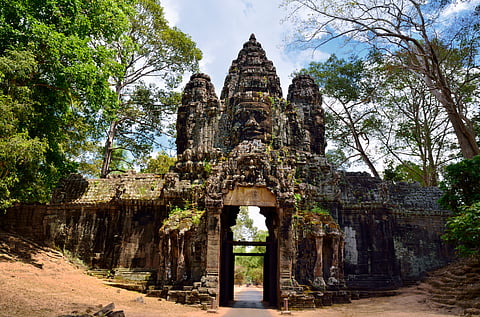

Walk into the ancient ruins of Cambodia — places like Ta Prohm, Angkor Thom, or Beng Mealea — and the temperature drops almost instantly. Even during Cambodia’s hottest months, these stone corridors stay noticeably cooler than the rainforest outside. This cooling effect feels mysterious, but it comes from a clever combination of architecture, geology, and nature.
Khmer builders chose laterite and sandstone for their temples. Both stones contain tiny pores that absorb moisture during the night. As the air cools after sunset, the stones slowly release their stored heat and soak up water from the humid air. By morning, the walls are naturally chilled. When sunlight arrives later, the stones warm slowly, releasing cool air inch by inch — acting like ancient thermal batteries.
Temple layouts also help. Long corridors, shaded doorways, and high ceilings create natural ventilation paths. As breezes move through the structure, hot air is carried upward and cooler air flows in behind it. Buildings aligned with prevailing winds experience even stronger cooling.
Nature adds another layer. Over centuries, strangler figs and silk-cotton trees have grown across the ruins, casting deep shade and holding moisture in their roots. Moss-covered stones stay damp and cool, insulating the inner chambers. Thick tree canopies block direct sunlight, preventing the stone from heating too quickly.
Root cover
Tree roots act as natural insulation.
Thermal memory
Stones retain night coolness for hours.
The contrast between jungle heat and temple coolness is often dramatic — visitors feel as though they’ve stepped from summer into a shaded cave. What seems magical is actually a sophisticated blend of porous materials, thoughtful design, and the natural partnership between stone and rainforest. The ruins are cooler because they were built to work with Cambodia’s climate, not against it.